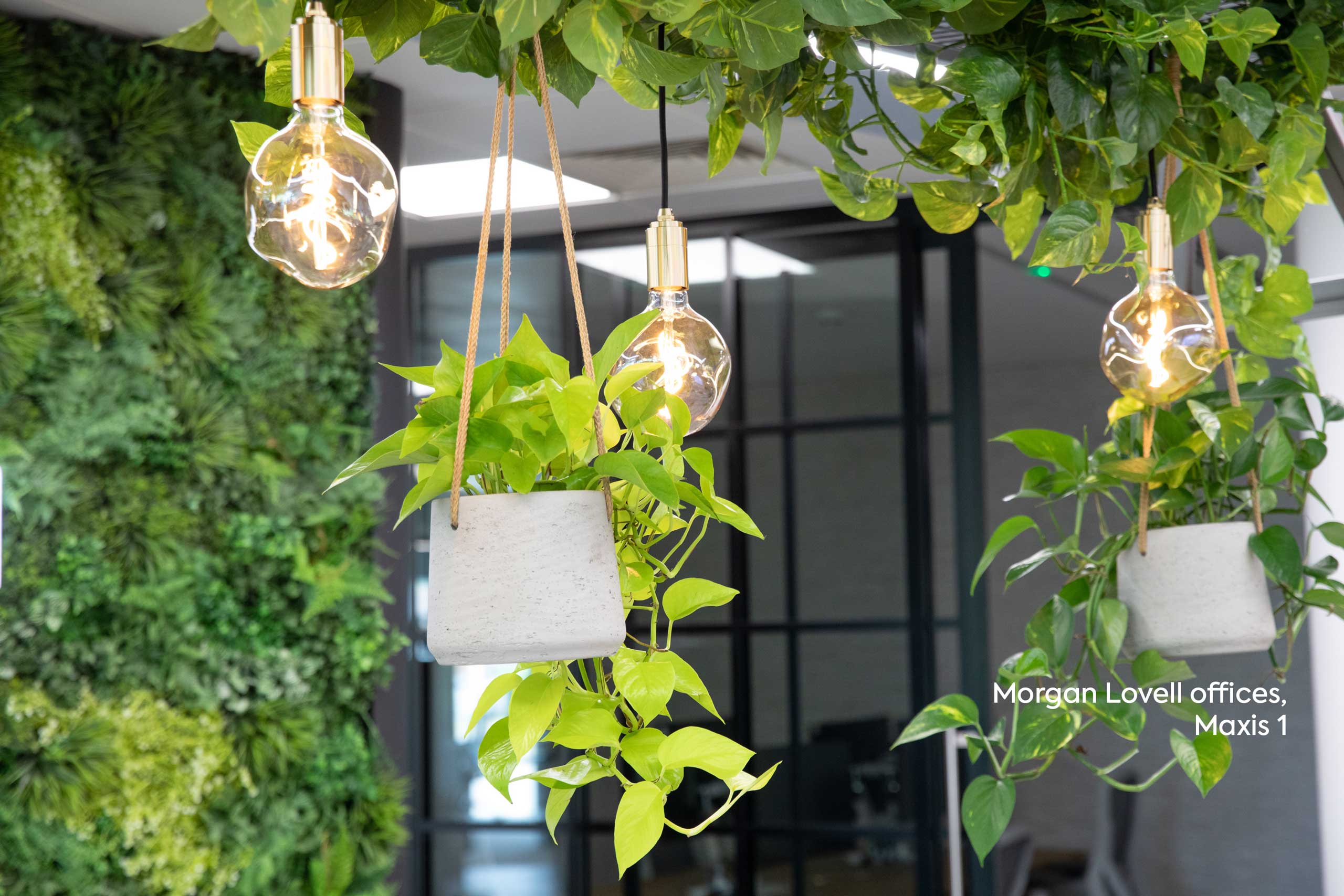The quest for employee well-being and productivity has led to a revolutionary approach in office space design: biophilia. This concept, which translates to ‘love of nature or living things’, is reshaping our workspaces by bringing the outdoors in.
As we spend ever more time indoors, particularly in office environments, connecting with nature has never been more crucial. Let’s look at how this can be done.
The natural advantage
Biophilic design is not merely a passing trend; it’s a response to our innate need for natural connections. This design philosophy seeks to incorporate elements of nature into our built environment, creating spaces that nurture our physical and mental health. In the context of office spaces, biophilic design offers a compelling solution to the challenges of modern work life, including stress, fatigue, and reduced productivity.
The growing significance of biophilic design in contemporary workplaces is underpinned by a wealth of research demonstrating the positive impacts of nature on human well-being. From reducing stress and improving cognitive function to boosting creativity and enhancing overall job satisfaction, the benefits of biophilic design are manifold. As businesses increasingly recognise the intrinsic link between employee wellness and organisational success, the integration of natural elements into office spaces has become a strategic imperative.
Understanding biophilic design
In a nutshell, biophilic design is about creating spaces with a connection with nature; it involves a holistic reimagining of the workspace to incorporate natural elements, patterns, and processes. The principles of biophilic design are rooted in our evolutionary history. For thousands of years, humans lived in close harmony with nature, and our bodies and minds are still attuned to natural environments. By bringing elements of nature into our built environments, biophilic design aims to satisfy this innate need for natural connection, even in the most urban of settings.
Key elements of biophilic design include:
Direct nature experiences: incorporating living plants, water features, and natural light.
Indirect nature experiences: using natural materials, colours, and textures that evoke nature.
Space and place conditions: creating environments that reflect natural spaces, such as prospect and refuge areas.
These principles align seamlessly with comprehensive approaches to employee wellness. By addressing the physical aspects of health as well as mental and emotional well-being, biophilic design supports a holistic view of workplace wellness.
Nature meets architecture
Implementing biophilic design in high-quality office spaces requires a thoughtful approach that blends natural elements with architectural ingenuity. Here are some essential features that can transform an ordinary office into a biophilic haven:
Maximising natural light: Large windows, skylights, and strategic placement of reflective surfaces can help flood the space with natural light, reducing the need for artificial lighting and boosting mood and productivity.
Get the best views: where possible, office layouts should be designed to maximise views of natural landscapes. Even in urban environments, views of sky, trees, or water can have a positive impact.
Indoor gardens and living walls: incorporating green spaces within the office improves air quality and provides a visual connection to nature. Living walls can be particularly effective in spaces where floor space is at a premium.
Natural materials and textures: using wood, stone, and other natural materials in flooring, walls, and furniture can evoke a sense of nature and create a more tactile, sensory-rich environment.
Biomorphic forms and patterns: incorporating shapes and patterns that echo those found in nature can subconsciously reinforce the connection to the natural world.
Water features: the sound and sight of moving water can have a calming effect and help mask background noise in busy offices.
Importantly, these elements can be incorporated into existing office structures with varying degrees of renovation. From simple additions like potted plants and nature-inspired artwork to more substantial changes like installing living walls or redesigning lighting systems, there are biophilic solutions for every scale and budget.
Benefits of biophilic workspaces
The advantages of implementing biophilic design in premium office spaces extend far beyond aesthetic appeal. Research consistently demonstrates tangible benefits that impact both employee well-being and business outcomes:
Improved air quality: plants act as natural air purifiers, removing toxins and increasing oxygen levels, leading to healthier work environments.
Reduced stress: exposure to natural elements may lower cortisol levels and blood pressure, contributing to a calmer, more focused workforce.
Boosted creativity: natural environments can stimulate creative thinking, leading to more innovative problem-solving and idea generation.
Greater job satisfaction: employees in biophilic workspaces report higher levels of job satisfaction and organisational commitment.
Improved acoustics: natural elements like plants and water features can help absorb sound, creating a more pleasant acoustic environment.
These benefits are not just theoretical. Companies like Google, Amazon, and Microsoft have embraced biophilic design in their offices and have reported significant improvements in employee well-being and productivity.
Designing for success: the future of workplace wellness
Biophilic design offers a powerful tool for businesses looking to create environments that not only look good but actively contribute to the health, happiness, and productivity of their workforce.
Investing in biophilic design is a strategic decision, one that can yield significant returns in employee retention, reduced absenteeism, and improved performance. By incorporating natural elements, businesses can create environments that resonate with our innate connection to nature, promoting a sense of well-being beyond the workplace.
Grade-A office space in the perfect working environment
Maxis is proud to be rated BREEAM ‘Excellent’, representing best practice for sustainability performance.. We have successfully installed 46,444 sq ft of solar PV at Maxis, saving 238 tonnes of CO2 per year, the equivalent of planting 10,914 trees. To learn more, get in touch with us today.



